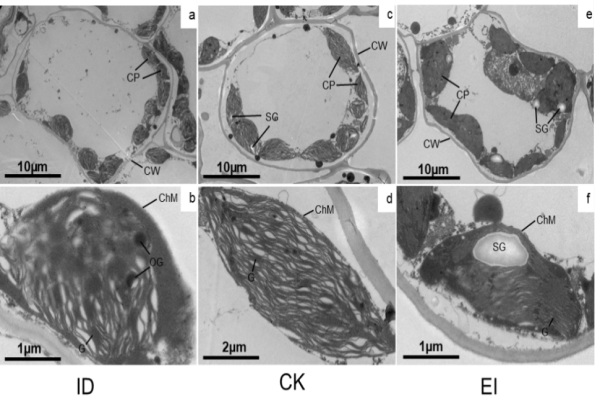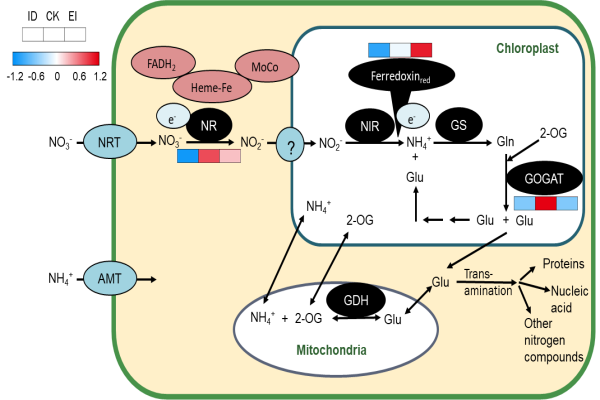Recently, Coconut Research Institute of Chinese Academy of Tropical Agricultural Sciences (CRICATAS) has made important progress in the research of the chlorosis of Areca catechu L. leaves, and for the first time revealed the molecular regulation mechanism of the physiological chlorosis of A. catechu leaves at the molecular level. The related research results of this work are based on " Iron deficiency leads to chlorosis through impacting chlorophyll synthesis and nitrogen metabolism in Areca catechu L." was published in the journal "Frontiers in Plant Science" (IF=5.7).
Deficiency of certain elements can cause leaf chlorosis in A. catechu L. trees, which causes considerable production loss. The linkage between nutrient deficiency and chlorosis phenomenon and physiological defect in A. catechu remains unclear. Here, we found that low iron supply is a determinant for chlorosis of A. catechu seedling, and excessive iron supply resulted in dark green leaves. Results showed that iron deficiency directly caused chloroplast degeneration and reduced chlorophyll synthesis in chlorosis leaves, while excessive iron treatment can increase chlorophyll contents, chloroplasts sizes and inflated starch granules. However, both excessive and deficient of iron decreases fresh weight and photosynthetic rate in A. catechu seedlings. And the accumulation of organic acids and flavonoids indicated a potential way for A. catechu to endure iron deficiency. On the other hand, the up-regulation of POD-related genes was assumed to be a defense strategy against the excessive iron toxicity. Our data demonstrated that A. catechu is an iron-sensitive species, therefore the precise control of iron level is believed to be the key point for A. catechu cultivation.
This work was supported by grants from Hainan Major Research Program of Science and Technology (ZDKJ201817), the Central Public-interest Scientific Institution Basal Research Fund for Innovative Research Team Program of CATAS (17CXTD-14). Li Jia from Coconut Institute of the Chinese Academy of Thermal Sciences is the first author of this article.
Fig. 1 Chloroplast structures in ID, CK and EI leaves of A. catechu.
Fig. 2 Nitrogen assimilation pathway related with N metabolism in ID, CK and EI leaves.
Article link: https://doi.org/10.3389/fpls.2021.710093


